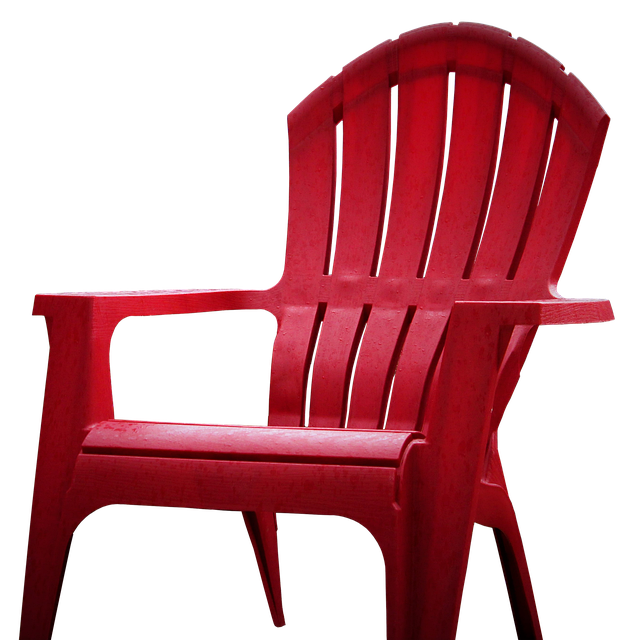Plastic wicker furniture has gained tremendous popularity as a stylish and durable outdoor furniture option. Its weather-resistant properties make it ideal for outdoor use, but many people wonder whether plastic wicker furniture can withstand the harsh winter weather.
It is not recommended to leave plastic wicker furniture outside during winter. Cold temperatures, moisture, and snow can cause damage such as cracking, warping, and mold growth. To protect your furniture, prepare it for storage, and keep it in a dry, sheltered location until warmer weather returns.
In this article, I will explore the effects of winter weather on plastic wicker furniture and provide valuable tips for preparing and maintaining it during the winter months. By the end of this article, you will have a better understanding of whether you can leave your plastic wicker furniture outside during winter and how to protect it from damages caused by cold temperatures, moisture, and snow.
Understanding Plastic Wicker Furniture
Plastic wicker furniture is a type of outdoor furniture that mimics the appearance of traditional wicker furniture but is made from synthetic materials. Plastic wicker furniture is typically made from polyethylene (PE) or polypropylene (PP) resin, which are both durable and weather-resistant. The material is designed to look and feel like natural wicker, but it is more lightweight, easy to clean, and does not require as much maintenance as traditional wicker.
Compared to traditional wicker furniture, plastic wicker furniture is more resistant to fading, cracking, and rotting. It is also resistant to UV rays, which helps to prevent the material from becoming brittle over time. Plastic wicker furniture is available in a wide range of styles, colors, and designs, making it a popular choice for outdoor living spaces.
While plastic wicker furniture is generally more durable than traditional wicker furniture, it still has some limitations. Over time, the material can become brittle and crack if it is exposed to extreme temperatures or direct sunlight for extended periods. Additionally, the material may become discolored or stained if it is not properly cleaned and maintained.
Impact of Winter on Plastic Wicker Furniture
Winter weather can have a significant impact on plastic wicker furniture if it is left outside without proper protection. Cold temperatures, moisture, and snow can cause the material to become brittle, fade, or crack. Additionally, ice and snow can add weight to the furniture, which can cause it to warp or break.
One of the main concerns during winter is moisture. If plastic wicker furniture is exposed to moisture for extended periods, it can become moldy or mildewed. This can lead to discoloration, unpleasant odors, and even health issues if left untreated.
Another concern is the impact of UV rays during winter. While UV rays are more commonly associated with summertime, they can still cause damage during winter. The combination of UV rays and cold temperatures can cause plastic wicker furniture to become brittle and crack over time.
Finally, exposure to extreme temperatures can cause the plastic material to expand and contract, leading to warping or cracking. If plastic wicker furniture is left outside during the winter months, it is at risk of developing cracks and other damages that can make it unsuitable for use in the following spring and summer seasons.
Therefore, it is crucial to take steps to protect plastic wicker furniture during the winter months to avoid potential damage.
Preparing Plastic Wicker Furniture for Winter
To protect plastic wicker furniture during the winter months, it is essential to take the following steps:
- Clean the furniture thoroughly: Before storing plastic wicker furniture for winter, it is important to clean it thoroughly to remove any dirt or debris that may have accumulated during use. Use a soft-bristled brush and mild soap and water to clean the furniture, then rinse it off with a hose and allow it to dry completely.
- Apply a protective coating: Applying a protective coating to plastic wicker furniture can help to seal the surface and prevent moisture from seeping in. There are many products available that are specifically designed for use on plastic wicker furniture. Be sure to follow the manufacturer’s instructions carefully when applying the coating.
- Cover the furniture: To protect plastic wicker furniture from the elements during the winter months, it is important to cover it with a waterproof cover. Choose a cover that is specifically designed for outdoor furniture and is made from a durable, waterproof material. Be sure to cover the furniture completely, including the legs and any other exposed parts.
- Store the furniture in a dry, sheltered location: When storing plastic wicker furniture for winter, it is important to choose a dry, sheltered location. Ideally, the furniture should be stored indoors in a garage, shed, or basement. If indoor storage is not an option, consider using a storage box or a waterproof tarp to protect the furniture from snow and rain.
Also read: Should you cover your patio furniture every night?
Maintaining Plastic Wicker Furniture During Winter
Maintaining plastic wicker furniture during winter is important to prevent any damage from developing and ensure that the furniture remains in good condition for future use. Here are 5 tips for maintaining plastic wicker furniture during the winter months:
- Regularly inspect the furniture: Regularly inspect your plastic wicker furniture during winter to check for any signs of damage, such as cracks or warping. If you notice any damages, take action immediately to prevent the damages from getting worse.
- Remove any snow or ice: If your plastic wicker furniture becomes covered in snow or ice during winter, be sure to remove it as soon as possible. Snow and ice can add weight to the furniture, which can cause it to warp or break.
- Ventilate the storage area: If you are storing your plastic wicker furniture indoors during winter, be sure to provide proper ventilation in the storage area to prevent the growth of mold and mildew. This can be achieved by cracking a window or using a dehumidifier.
- Clean the furniture regularly: Regular cleaning of the furniture during winter can help to prevent the buildup of dirt, debris, and mold. Use a soft-bristled brush and mild soap and water to clean the furniture, then rinse it off with a hose and allow it to dry completely.
- Avoid using harsh chemicals: When cleaning plastic wicker furniture, avoid using harsh chemicals or abrasive cleaning products, as these can damage the material. Stick to mild soap and water, and avoid using pressure washers, as the force of the water can also damage the material.
Conclusion
In conclusion, plastic wicker furniture is a popular choice for outdoor furniture due to its durability and weather-resistant properties. However, it is important to take steps to protect plastic wicker furniture during the winter months to prevent damage caused by cold temperatures, moisture, and snow.
Preparing plastic wicker furniture for winter by cleaning it thoroughly, applying a protective coating, and covering it with a waterproof cover can help to protect it from the elements. Maintaining plastic wicker furniture during winter by regularly inspecting, removing snow or ice, ventilating storage areas, cleaning regularly, and avoiding harsh chemicals can help to prevent damage and ensure that the furniture remains in good condition for future use.
By taking these steps, you can enjoy your plastic wicker furniture for years to come and avoid the need for costly replacements due to damages caused by winter weather. Remember to always follow the manufacturer’s instructions when cleaning and maintaining your plastic wicker furniture, and store it in a dry, sheltered location during the winter months.










